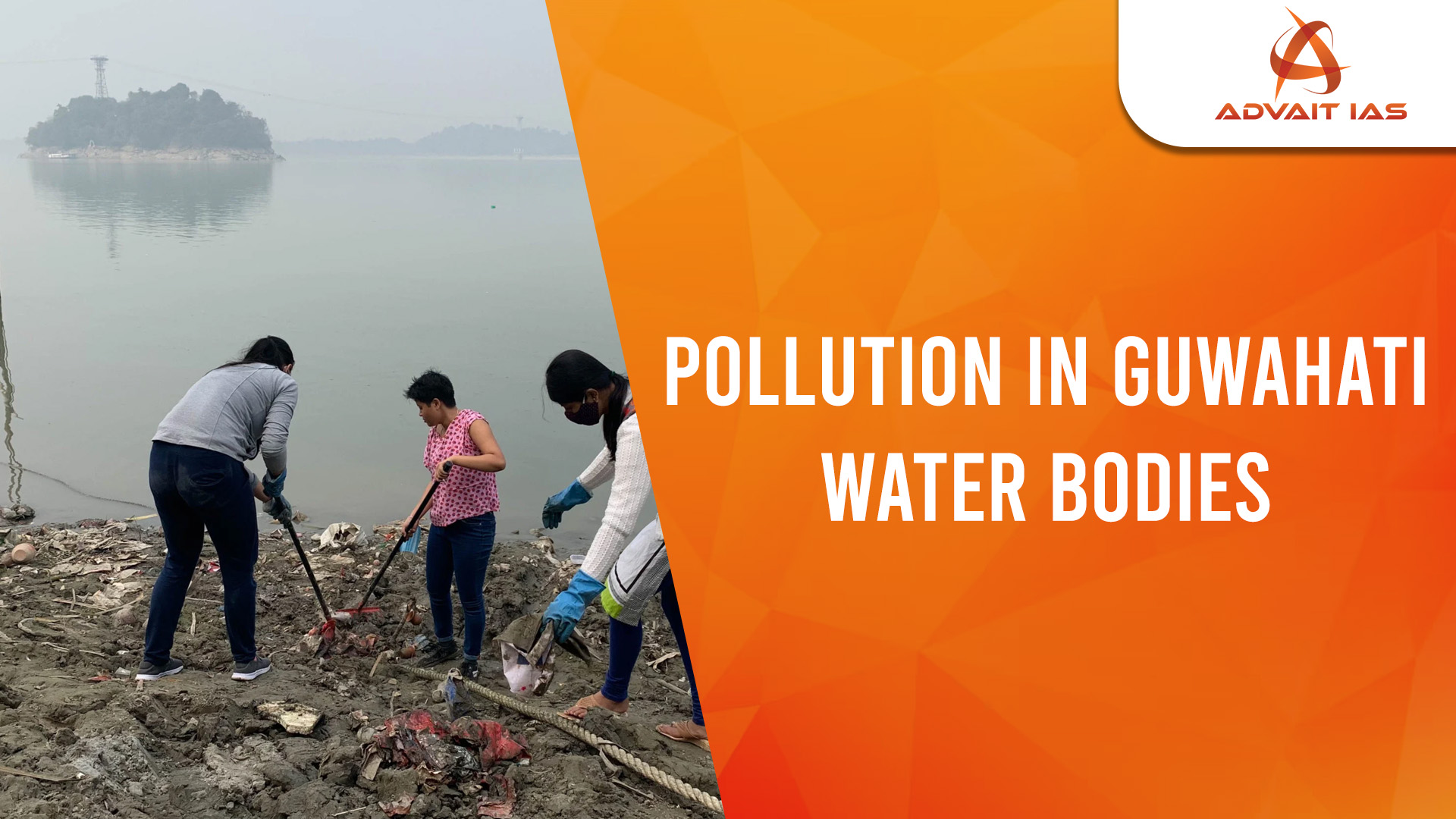Five of the nine most polluted water bodies in Assam are located in Guwahati. The Bharalu River is the most polluted water body in the state.
Key Factors Behind Pollution:
- Sewerage Discharge:
-
- Unregulated discharge of sewage into water bodies.
- Improper Waste Disposal:
-
- Garbage dumping by the local population.
- Lack of Effective Waste Management:
-
- Ineffective systems to manage and treat urban waste and sewage.
- Urbanization Pressure:
-
- Increased population and urban activities leading to the overburdening of water bodies.
- Neglect of Conservation Measures:
-
- Insufficient implementation of policies to protect water bodies from pollutants.
Way Forward to Address Water Pollution in Guwahati:
- Sewage Management: Build and upgrade sewage treatment plants (STPs) to prevent untreated discharge.
- Waste Management: Promote garbage segregation, recycling, and community-led waste initiatives.
- Awareness Campaigns: Educate citizens on responsible waste disposal and environmental impacts.
- Policy Enforcement: Impose strict penalties for pollution and strengthen urban planning to protect water bodies.
- Ecological Restoration: Clean polluted rivers like Bharalu and restore wetlands and riparian zones.
- Water Monitoring: Install real-time monitoring systems to track and manage pollution levels.
- Community Involvement: Engage residents, NGOs, and volunteers in clean-up and restoration drives.
- Technology Use: Adopt bioremediation and eco-friendly sewage treatment technologies.
- Urban Regulation: Prevent encroachment on water bodies and establish buffer zones.
- Public-Private Partnerships: Leverage CSR and private sector funding for waste and water management.






